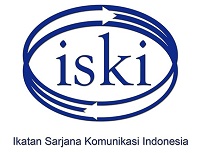Marketable Branding in Surabaya Mayor Election 2015-2019
Abstract
Keywords
Full Text:
PDFReferences
Bartle, J., & Griffiths, D. (2001). Political Communications Transformed: from Morrison to Mandelson. Basingstoke: Palgrave Macmillan.
Berg, C. F. van D. (2013). Strategic Planning for Political Parties: A Practical Tool. Amsterdam: International IDEA and NIMD.
Berita Metro. (2015, October). Pilwali Surabaya, Kunci Kalahkan Petahana Ambil Suara Golput. Retrieved from http://www.beritametro.co.id/jatim-memilih/pilwali-surabaya-kunci-kalahkan-petahana-ambil-suara-golput %0A
Bunnell, T., & Miller, M. (2013). Urban Development in a Decentralized Indonesia: Two Success Stories? Vancouver: Pacific Affairs.
Craig, G. (2004). The Media, Politics and Public Life. Victoria: Ullen & Unwin.
EPA. (2002). Community Culture and the Environment: A Guide to Understanding a Sense of Place. Washington D.C: Office of Water.
Lee-Marshment, J. (2001). The product, sales and market-oriented party - How Labour learnt to market the product, not just the presentation. European Journal of Marketing, 35(9/10). Retrieved from doi: 10.1108/EUM0000000005959
Lock, A., & Harris, P. (1996). Political Marketing Vive Jla difference. European Political Marketing (Vol 30 No.).
Mair, P., & Smith, G. (1990). Understanding Party System in Western Europe. New York: Frank Cass.
Malang Post. (2015). Menangkan Serasi, Partai Demokrat Ajak Parpol Non Pendukung. Retrieved from http://www.malang-post.com/nasional/107057-menangkan-serasi-pd-ajak-parpol-non-pendukung
Martin, A. J. (2012). Young People and Politics: Political Engagement in The Anglo-American Democracies. New York: Routledge.
O’Shaughnessy, J. (1995). Competitive Marketing: A Strategic Approach. New York: Routledge.
Smith, G., & Hirst, A. (2001). Strategic Political Segmentation: A New Approach for a New Era of Political Marketing. European Journal of Marketing, Vol.35, No(No. 9), 1058–1073.
Worcester, R. M., & Baines, P. R. (2006). Voter Research and Market Positioning: Triangulation and its Implications for Policy Development, In Davies, P,J & Newman, (Eds), Winning The Election With Political Marketing. New York: Haworth.
World Bank. (2007). Tools for Institutional, Political, and Social Analysis of Policy Reform. Washington D.C: The World Bank.
DOI: https://doi.org/10.29313/mediator.v12i2.5007
Refbacks
- There are currently no refbacks.

This work is licensed under a Creative Commons Attribution 4.0 International License























